A new type of urban markets is gaining popularity across Korea. Some of the most notable ones are run by Marché@, a farmers market organization spearheading a new culture among producers, sellers, and consumers. The nonprofit’s projects include regular, seasonal, and pop-up markets, some of which are organized in collaboration with partners that align with its founding principles.
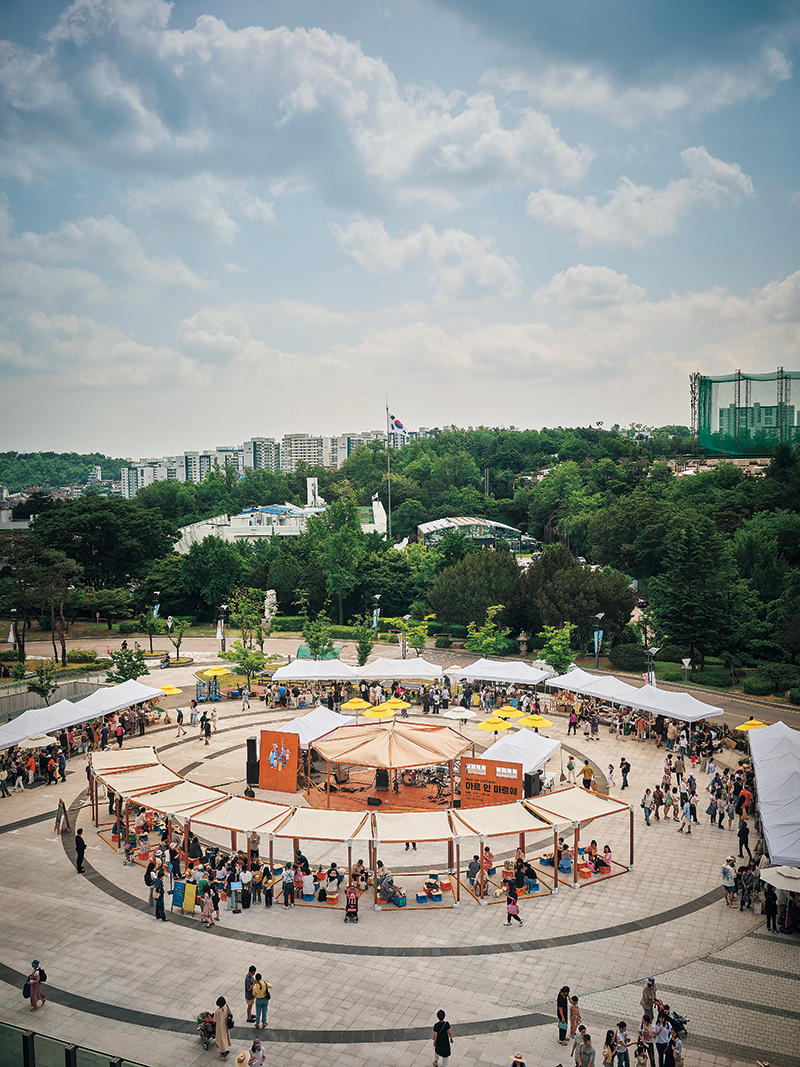
Art in Marché 2023 took place in front of the Haeoreum Grand Theater in May. This event, organized by Marché@ in collaboration with the National Theater of Korea in Seoul, originated in 2021.
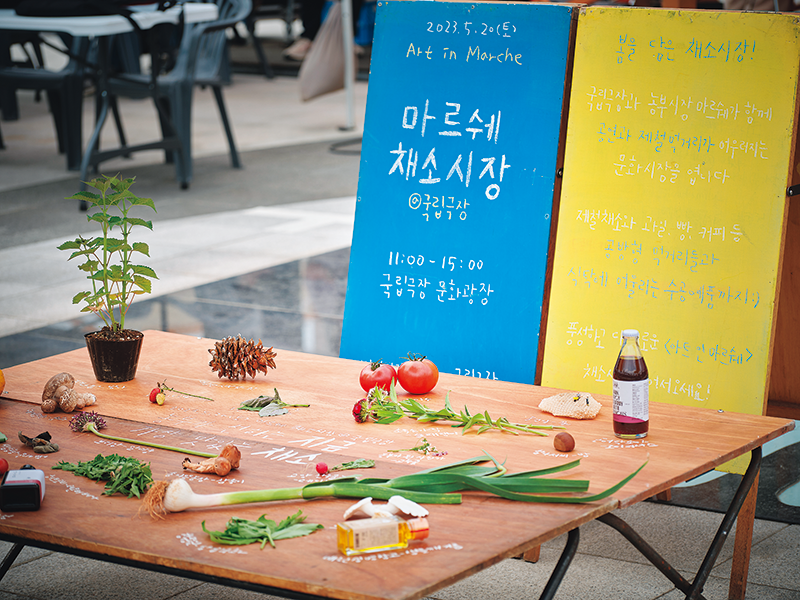
Signboards announcing the business hours of Marché@, a marketplace where sustainably cultivated products are sold.
On every third Saturday during spring and autumn, shoppers flock to the square in front of the Haeoreum Grand Theater in Jangchung-dong, Seoul, the largest venue of the National Theater of Korea. Some enjoy performances on a temporary stage in the square’s center, but the real attractions are the fresh produce, artisanal food, and handicraft on offer at the eco-friendly Art in Marché.
One shopper points out that the market is particularly attractive for having vegetables harvested just hours earlier. “Maybe for this reason, the food cooked with these ingredients has exceptional flavor. On top of that, you can also get useful tips like special cooking techniques or how to preserve the products’ freshness.”
But the advantages do not stop there. The markets by Marché@ aren’t primarily aimed at serving as spaces for direct selling between producers and consumers. Rather, they seek to build friendships and bonds through friendly banter, explanations of the different goods, and insights into environmental protection.
PERSONAL INTERACTIONS
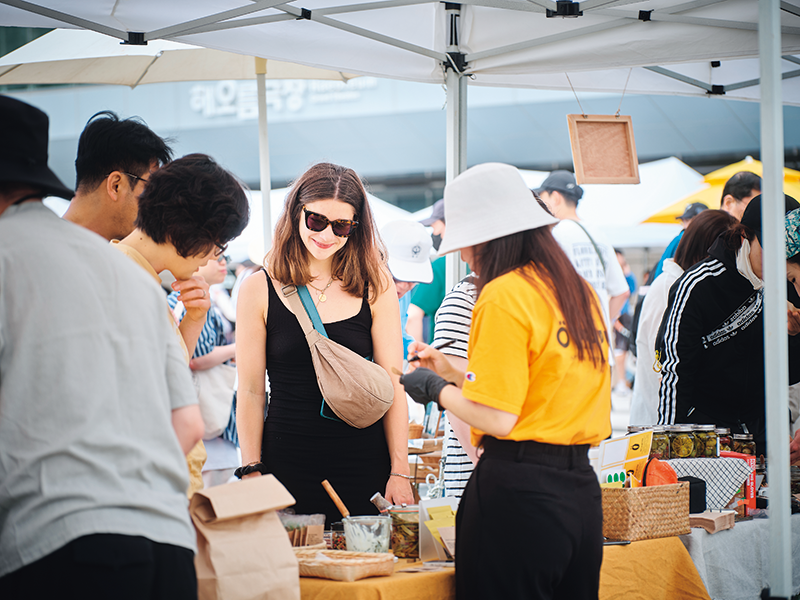
Marché@ aspires to be more than just a platform for buying and selling goods. It aims toa vibrant space where merchants and consumers can interact through lively conversations.
“In a world where multiple platforms compete, the personal interactions between the farmers and shoppers are in themselves significant,” says one of the organizers of the market.
For shoppers, the market provides an opportunity to have their questions answered directly by the growers who cultivated the vegetables and made the food products. For producers, eye contact with enthusiastic buyers gives them a sense of achievement that is absent when simply delivering to intermediaries in distribution channels.
“As a seller of hummus and vegetarian sauces made from local beans, I find spaces like this extremely valuable because without them, I wouldn’t have a chance to meet customers,” said one producer.
Elsewhere around Seoul, Marché@ runs several other markets, together with partners that align with its founding principles, and occasionally sets up pop-up stores with them. In 2019, for example, it jointly organized an event with the National Museum of Modern and Contemporary Art, Korea (MMCA) to commemorate the museum’s 50th anniversary.
ROOFTOP BEGINNING
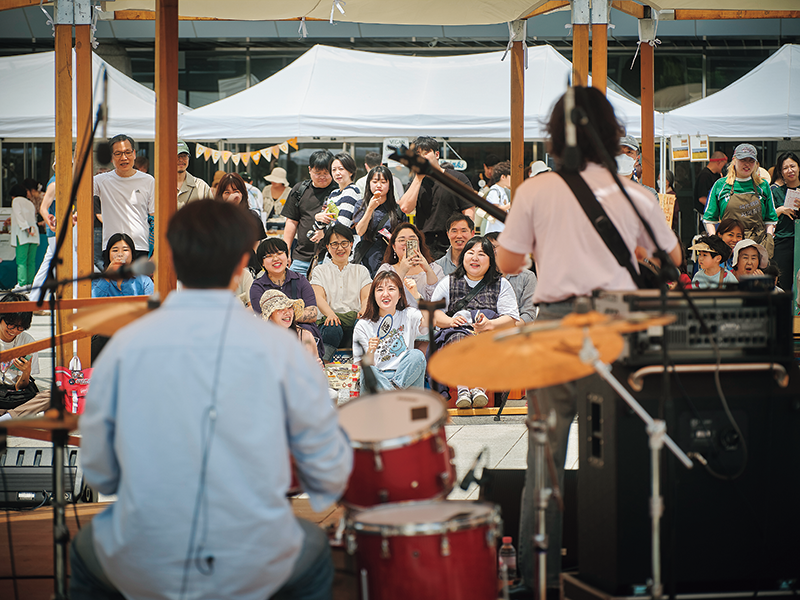
Art in Marché offers more than visual enrichment. Here, visitors enjoy a performance of the four-member rock band HOA.
Marché@ was launched in October 2012 in Hyehwa-dong, Seoul, by three women who had cultivated rooftop farms and shared a vision of farming that would be natural and involve direct transactions. Their idea was toa space that focused on human connections and vibrant conversations, rather than simply being a place to exchange goods and money.
They wanted the name of their venture to convey the concept of a market that could be opened anytime, anywhere. That led to attaching the symbol for “at” to the French word marché, meaning “marketplace.”
Over the next ten years, the nonprofit organization initiated sizable and vibrant marketplaces. One of its notable activities is the Farmers Market, which takes place every other Sunday at Marronnier Park in Daehangno, near the birthplace of Marché@ in Hyehwa-dong. It attracts many young people eager to explore the offerings of this unconventional market.
Additionally, the Vegetable Market, which aims to have a close connection with the daily lives of neighborhood residents, regularly opens in Seogyo-dong and Seongsu-dong, in Seoul’s west and east, respectively.
Each location has its own distinctive atmosphere and concept, but all markets share one key characteristic: people engaging in lively conversations while carrying shopping containers of various shapes and colors.
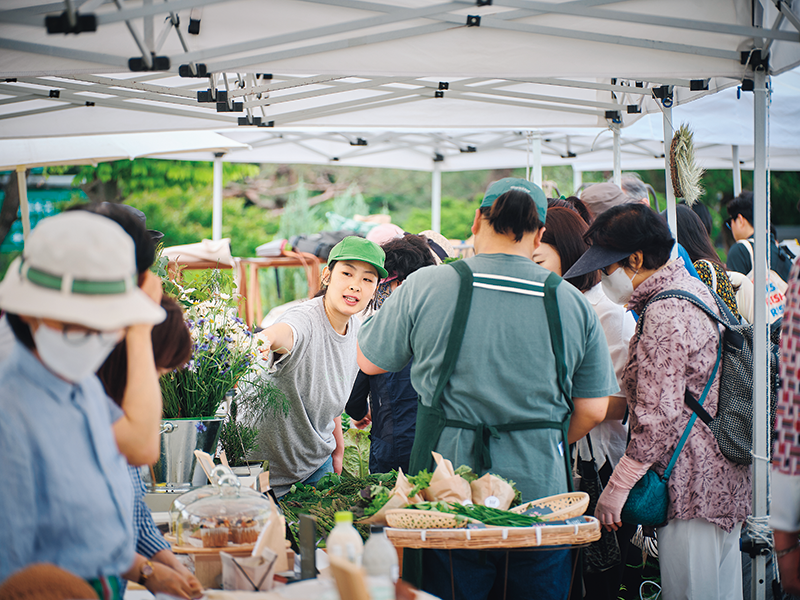
Marché@ follows the principle that market participants should be farmer-producers to ensure that buyers receive a firsthand explanation of the goods for sale.
ACTIVE PROGRAMMING
The steady growth can be attributed at least in part to the numerous programs run by a team of organizers, known as Marché Friends. They oversee the operations of the markets and promote the true value of agriculture to consumers through a range of activities. For example, they publish materials explaining how the crops are connected to farming methods, soil conditions, and the surrounding ecosystem.
The organizers also arrange tours where consumers can visit farms to observe the ways farmers manage their operations and engage in conversations with them. Additionally, the team collaborates with farmers, chefs, and consumers to plan and execute projects that foster cooperation and engagement among these groups.
“We drew inspiration from the history of traditional Korean markets as spaces for community relationships,” said one of the Marché Friends. “Through food, which forms the foundation of sustenance, people establish connections and engage in conversations, ultimately reconnecting lives that were once fragmented. This is the starting point of a new life.”
In 2017, Marché@ released a sustainability report, titled Words Become Seeds. It declared that the driving force behind its efforts is “connection” and emphasized that urban and rural areas can be bridged through food.
ENVIRONMENT
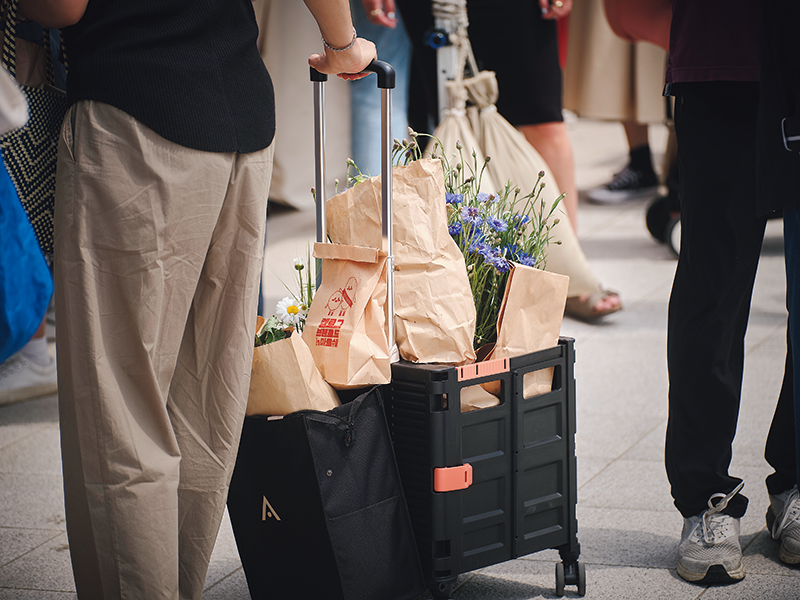
Most Marché@ customers bring their own food and beverage containers, in addition to the usual shopping bags.
The markets’ emphasis on sustainable practices and their dedication to reducing plastic waste has gathered significant support. People who frequent the markets of Marché@ not only bring their own shopping bags but also reusable tumblers and containers. This commitment to eco-friendly habits is seen as one of the markets’ greatest strengths. Furthermore, Marché@ has played a crucial role in raising awareness about the interconnectedness of people’s consumption habits with the ecosystem and the broader impact they can have.
Urban farmers markets were d to address problems arising from mass production. This is why Helena Norberg-Hodge, the author of Ancient Futures: Lessons from Ladakh for a Globalizing World, started the nonprofit organization Local Futures. In her book, first published in 1991, she argued that the restoration of the local agricultural system was necessary for the recovery of the economy and communities of Ladakh, a region governed by India. To this end, she advocated cultivation of an array of crops on small-scale farms, so produce could be grown and consumed locally.
Fast forward 30 years, the value of crops from small-scale farms is still not properly appreciated. This is precisely why the emergence and growth of farmers markets, resembling traditional markets, is seen as a positive development.
They continue to pop up throughout Korea, but many of them are one-time affairs, stifling any chance of developing a sense of community. To ensure future growth of farmers markets, it is crucial to reach consumers with useful information on agriculture and the environment and through appealing programs and activities. That has been the formula of success for Marché@.